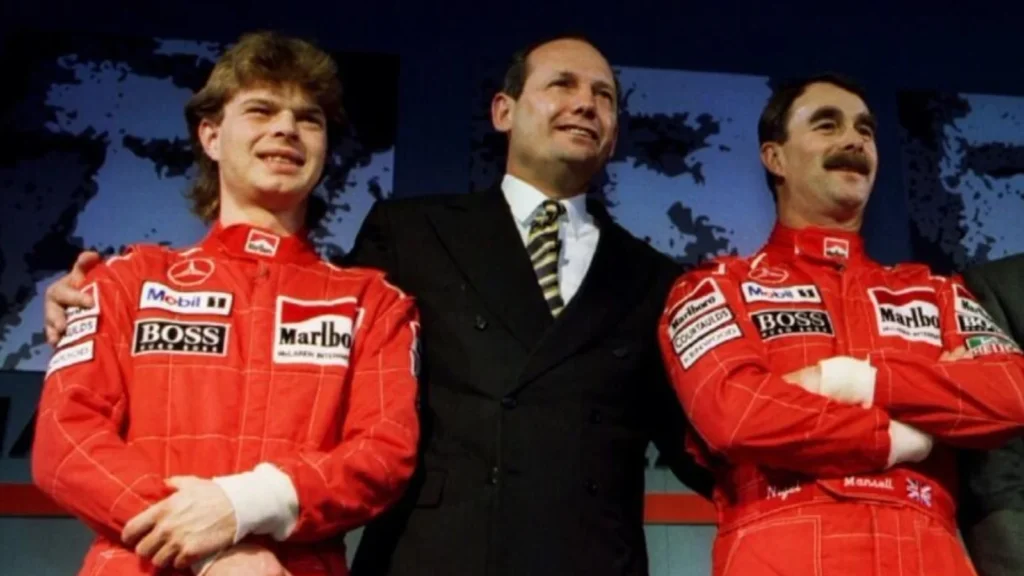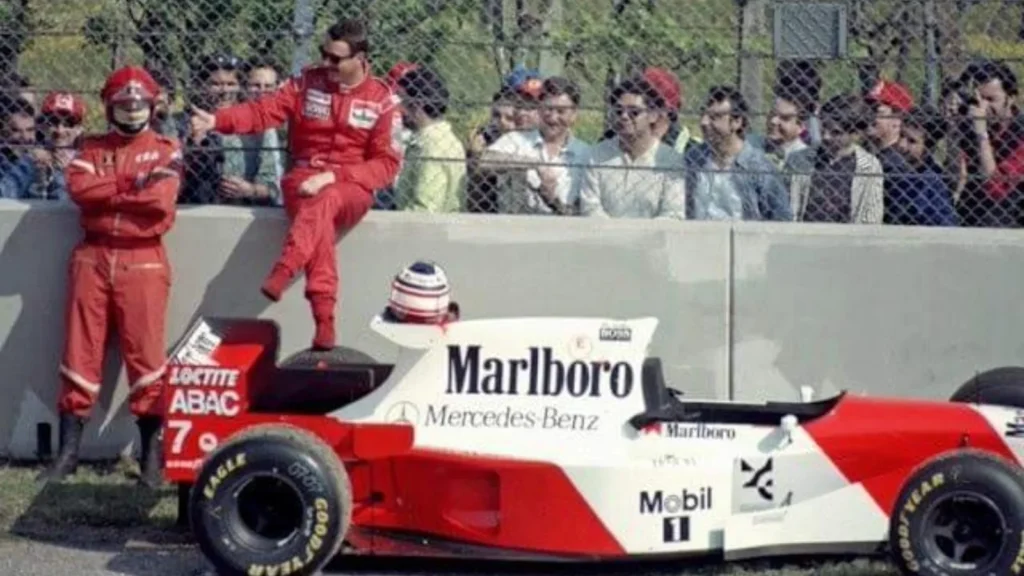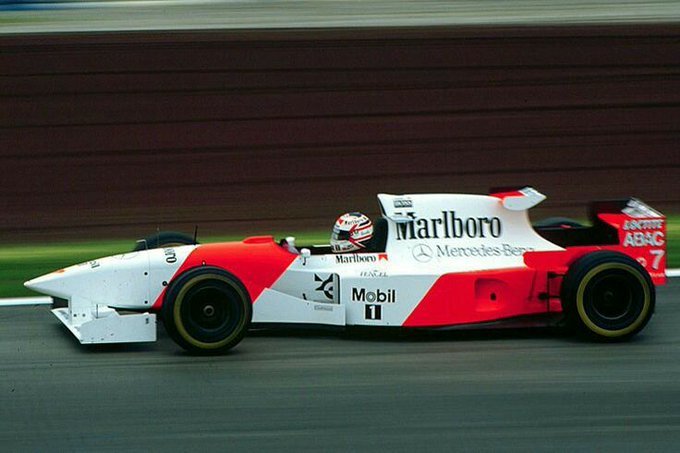When you ask a Formula One fan to name a driver to have driven for both McLaren and Williams, you’d probably get answers like Ayrton Senna, Alain Prost, Juan Pablo Montoya or even recently, Carlos Sainz. Many forget the legendary Nigel Mansell.
Nigel Mansell is one of only two drivers to have driven for F1’s four greatest teams in Lotus (1980-1984), Williams (1985-1988, 1991-1992, 1994), Ferrari (1989-1990) and McLaren (1995). The other being Jacky Ickx.
The American Success Story of Nigel Mansell
Nigel Mansell had already become a motorsport racing icon before joining McLaren. He had not only won the Formula One World Championship in 1992, but he also won the PPG Indy Car World Series in 1993, making him the first and only driver to be defending both titles at the same time because Prost (Mansell’s replacement at Williams), won the title on the 26th of September in Portugal when Mansell won the Indy Car title a week prior at Nazareth. An interesting fact is that Mansell’s Indy Car team-mate was Mario Andretti, who he replaced at Lotus in 1980.
After Mansell won the IndyCar title, he remained there for another season, although a far less successful season followed. In the week between Portland and Cleveland, he came back to F1 for the 1994 French Grand Prix.
The Return
There were a few reasons why Mansell was brought back. Firstly, Williams wanted an experienced driver to help them win the constructors. Secondly, Bernie Ecclestone, the head of Formula One, wanted Mansell back as he was a big name and after the retirement of Prost and tragic death of Senna, F1 lacked a big name. Due to IndyCar’s schedule he only could race in France and the final three races in the European, Japanese and Australian Grand Prixes.
He had a good start, qualifying second and running third when he retired. Another retirement came in Europe but in the final two races, Mansell impressed. He finished fourth in Japan and won in Australia. Mansell could have became only the third driver to win his last Grand Prix (Luigi Fagioli in the 1951 French Grand Prix and Jim Clark in the 1968 South African Grand Prix) but he decided to come back to F1 to join McLaren. What followed was a very political dispute.

Political Tension
See, Mercedes had re-entered F1 for the first time in any capacity since 1955 in 1994 first as an engine supplier to Sauber, and from 1995, as an engine supplier to McLaren after they had a disastrous year with the Peugeot engine. Marlboro were McLaren’s chief sponsors, with the team name entered being “Marlboro McLaren Mercedes” which showed which three had the most influence within the team.
Marlboro and Mercedes wanted two very different things in relation to driver lineup. One driver had already been picked for 1995, as Mika Hakkinen had been consistent for them since replacing Michael Andretti (who Mansell replaced in IndyCar). The other choice was much trickier and it depended on what part of the team name had the biggest influence. Marlboro, being a well-known sponsor in Formula One since 1972, working with McLaren since 1974, wanted a world champion driver.
In the past, they had achieved this with Emerson Fittipaldi, Niki Lauda and Keke Rosberg, but with Mercedes coming back into the fold it was made difficult. Mercedes wanted a lesser-known driver as they had a lot of eyes on them with their return. With Sauber it was lowkey, as Sauber were a new team with little expectations, but McLaren were F1 greats. There was much more pressure on them. Eventually, Marlboro won the argument and Mansell signed for McLaren for 1995.

The Disastrous Return
Immediately there was cause for concern, as Mansell did not fit in the car in pre-season testing. The car was too narrow for him. As a result, McLaren needed to build a separate car for him, similarly to how Tyrrell needed to build two separate cars for Jackie Stewart and Francois Cevert. As a result of this, Mark Blundell replaced Mansell for the first two races of 1995.
One thing was clear behind the scenes though. Mansell wasn’t as meticulous as the likes of Senna and Prost. A great example of this comes from David Coulthard, who remembered that in one test, Senna tweaked his neck yet was there the next day listening to Coulthard’s feedback to see if he could trust him. Coulthard then compared that to Mansell and said: “And when I compare that to Nigel Mansell when I was his test driver, he would set a lap time and then he would bugger off to the golf course.” And this was very much so the case at McLaren as well.
In fact, Hakkinen decided to roll with the punches of the McLaren MP4/10 as did Blundell, but Mansell didn’t.
A notable drop in performance and motivation
Hakkinen and Blundell both scored points with the MP4/10 with a fourth for Hakkinen and a sixth for Blundell in Brazil. Mansell debuted with the team in San Marino, but his struggles were evident to see. Mansell qualified in tenth with a 1:29.517.
Hakkinen meanwhile set a 1:28.343. If the gap between the two of 1.174 seconds was around a long track like Spa, it would be more reasonable. But for a 1.174 second gap between teammates at a short track like Imola was simply not good enough. Blundell was three tenths behind Hakkinen in Interlagos. The Argentine Grand Prix wasn’t a good comparison due to the mixed weather conditions.
The race wasn’t great either as Mansell and Eddie Irvine collided while they were fifth and sixth. Then in Barcelona in the following round, Mansell had enough. He retired because of poor handling and after only two races with McLaren, he was out. He left McLaren, citing poor car performance.
20 years later, Mansell said he regretted leaving in an interview with the BBC: “I have to say, unequivocally, that given the same set of circumstances what I should have done, and didn’t do, is sit in the office for a day or so to have a good chat with Ron Dennis. He would have helped me enormously and the chances are I wouldn’t have stood down at that time.”
Mansell never drove in Formula One again.



